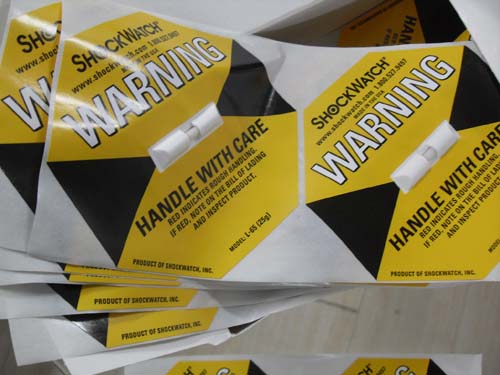
Although currentlyAnti vibration labelThe development trend and market demand prospects of our packaging industry are promising, but currently there are still some obstacles to the development and widespread use of anti vibration labels. Anti vibration labels are relatively high-end technological products, and the industry is not yet standardized. The government has not introduced relevant policies and legislation, and most of them are still at the level of publicity. Moreover, the current anti vibration label packaging is not the mainstream product in the packaging industry. Most people use traditional cushioning packaging and anti vibration labels in practical operations, and the majority of their main customers are high-end product manufacturers. The benefits of such labels are seemingly unknown to the general consumer. The increasing attention to packaging costs is not a problem for companies concerned about label damage in the long run.
Meanwhile, for logistics companies, it is important toAnti vibration labelBefore being widely used, providing it to customers based on their requirements would increase operational costs even in a short period of time. However, in the long run, the best way to lead is to stay ahead of the market, reassure customers, and gain a larger market share.
The first point is that there is ambiguity in determining the brittleness value of a product. Currently, the most accurate method for determining the brittleness value of a product is based on R E. Newton proposed the theory of breaking limits for conducting impact damage tests. During this process, a small acceleration increment is added each time until the tested product is damaged. Obtain the peak acceleration boundary line of the product. The last undamaged impact input is taken as the brittle value of the product, indicating that this method is conservative. The actual critical speed may be at a certain position between the acceleration value when the product is damaged and the last undamaged point. The peak acceleration boundary line determined by this method has ambiguity. Secondly, in the impact test, considering the harsh flow environment conditions, various types of impact pulses (such as sawtooth waves, half chord rolls, etc.) and the most severe rectangular pulses are used as input for the impact. Therefore, the obtained critical acceleration boundary line also has conservatism. Furthermore, in actual flow, the direction of impact on the packaging has randomness, and the fragility value of the product varies with the direction of impact. In the experiment of measuring fragility value, it is impossible to conduct impact damage tests on all directions of the product. This brings ambiguity to the determination of product brittleness value· Especially for certain valuable products, it is not feasible to use boundary theory for damage testing. Only by applying existing value data of similar products can an evaluation be roughly made to guide design, thus having significant ambiguity